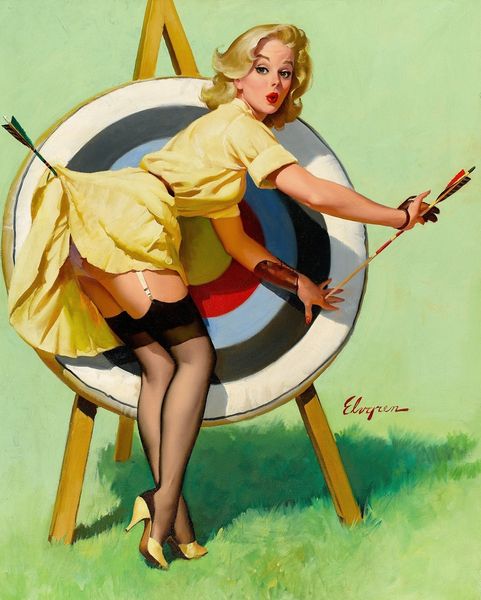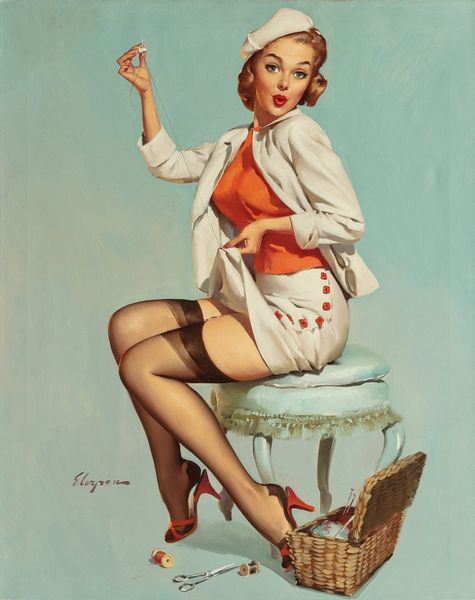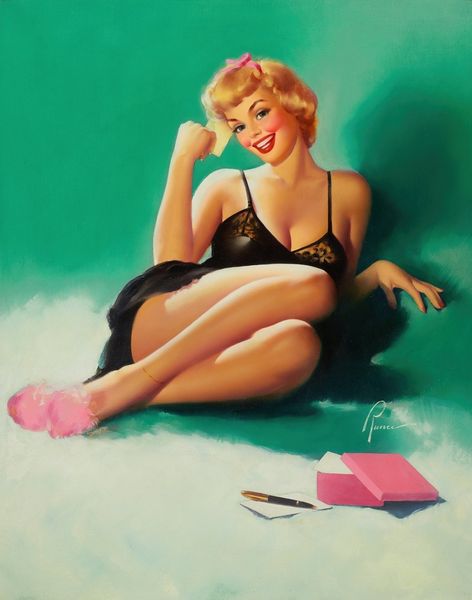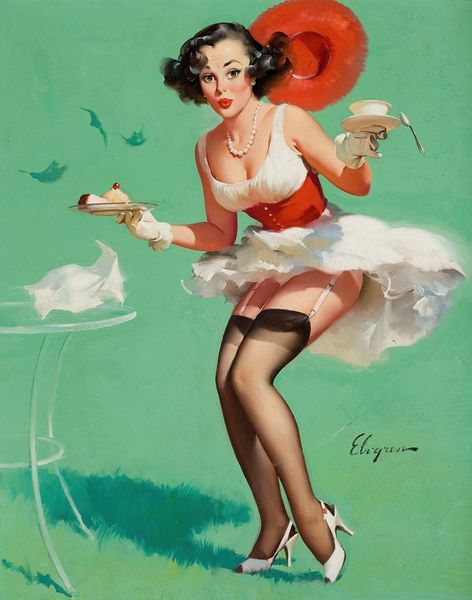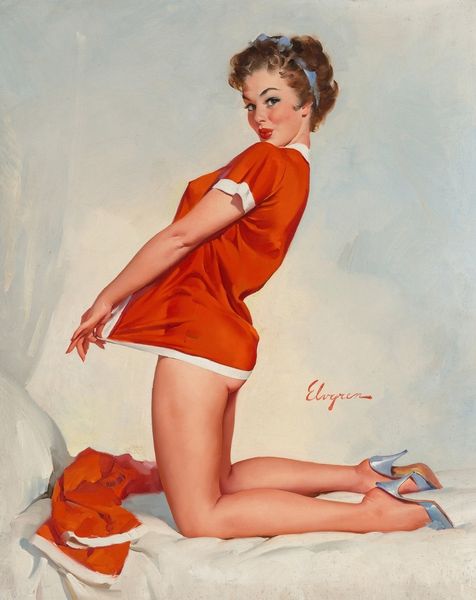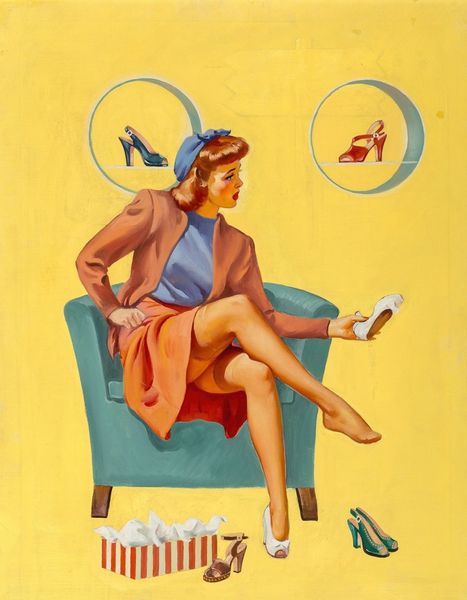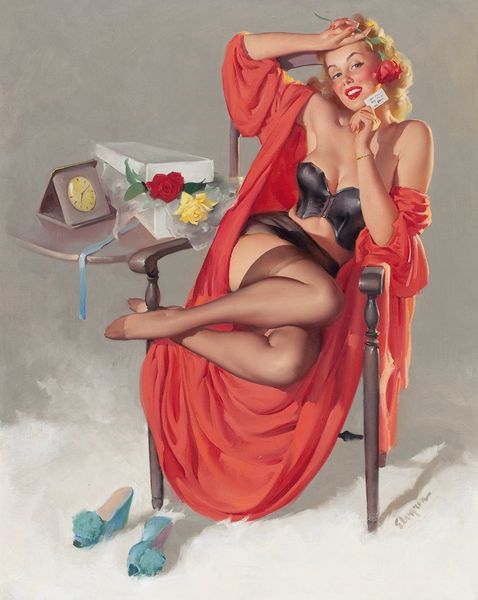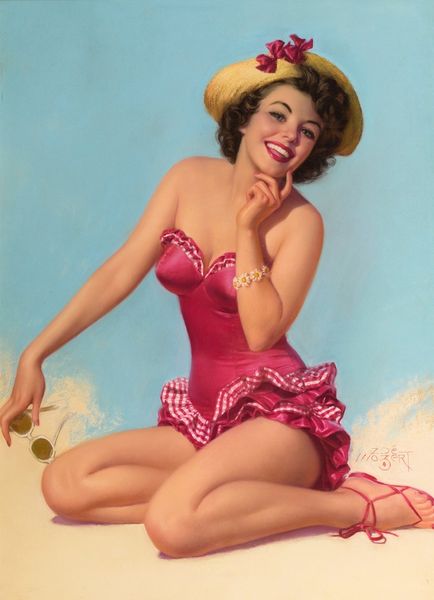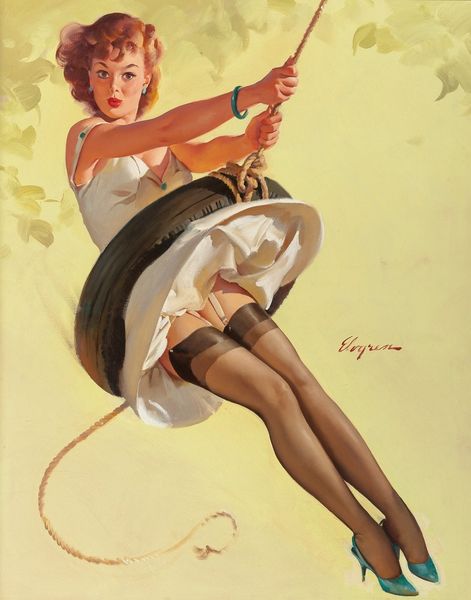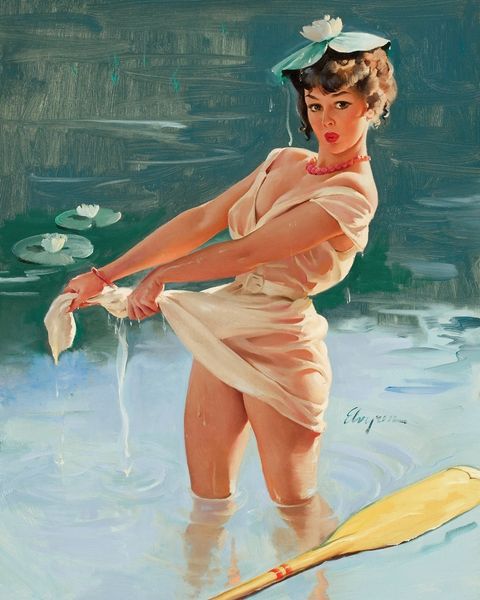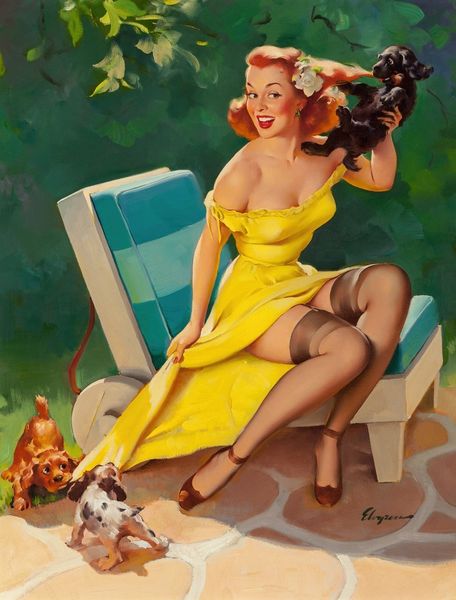
Copyright: Modern Artists: Artvee
Editor: Gil Elvgren’s 1946 oil painting, "Net Results," depicts a woman on a tennis court, looking slightly flustered. It's...well, it’s definitely eye-catching. What do you make of this image, in terms of its cultural context? Curator: Well, immediately, I see a representation of post-war femininity, carefully constructed, but ultimately, constrained. Elvgren places her on the court, suggesting activity and perhaps even empowerment, but the torn net and her expression hint at a more complicated reality. Editor: Constrained? I see someone playfully caught in a bit of a jam, maybe embarrassed about missing a shot. Curator: Precisely. What is Elvgren saying about the expectations placed on women at the time? This isn't simply a playful image. Consider the gaze: she's caught, almost like she’s caught *out*. This piece, and others like it, shaped the image of women in advertising and popular culture, often reducing them to objects of desire, which in turn perpetuates systems of power. What’s she selling, do you think: tennis or… something else? Editor: I see what you mean. The slightly torn dress, her expression… it all becomes more loaded. Curator: And what about that title, "Net Results?" A pun, yes, but what are the actual “net results” of these kinds of images on women’s autonomy and self-perception? Who benefits from this carefully constructed ideal? Editor: It definitely reframes the work, considering the cultural forces at play and the male gaze so prevalent at the time. I came in thinking lighthearted pin-up, but now I'm seeing a much more critical dialogue on gender roles and societal expectations. Curator: Exactly. By understanding the visual language and historical context, we can unravel the complex messages these images convey and reflect on their enduring impact.
Comments
No comments
Be the first to comment and join the conversation on the ultimate creative platform.

